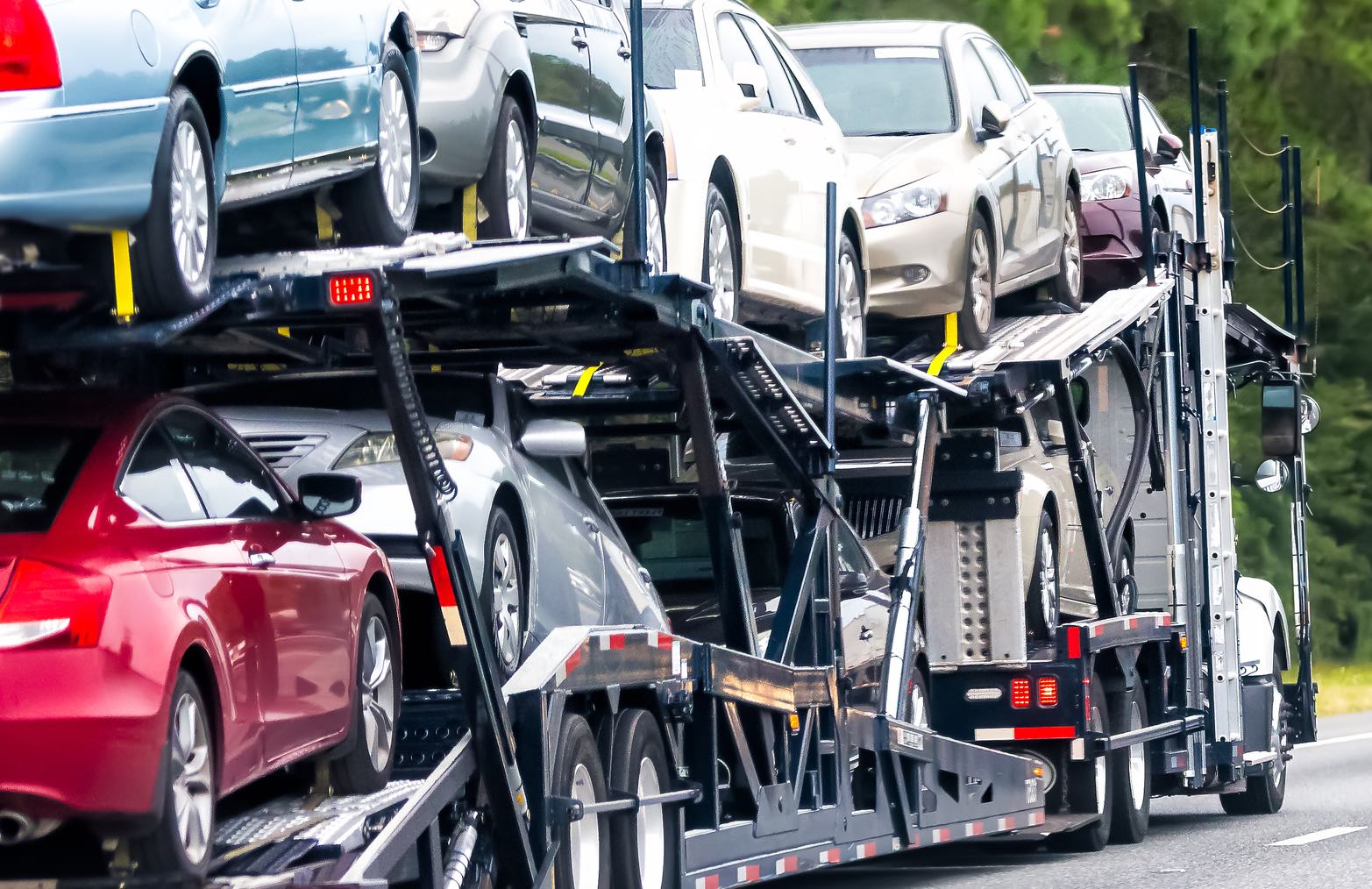For many people, shipping a car across the United States may be an intimidating but necessary undertaking. Knowing the ins and outs of interstate auto shipping is essential whether you’re relocating to a new state, bought a car from a distant seller, or have any other reason why you need to ship a car. The following article explores the several ways to move your automobile over state lines safely and effectively, as well as the associated expenses, preparations, and factors. It is intended to explain the whole process so that anybody, including first-time shippers all the way through experienced shippers, may use it with less fear and greater accessibility. The goal of this guide is to arm you with the knowledge necessary to make well-informed decisions on car shipping by offering concise, useful information.
Knowing your alternatives well is essential while navigating the interstate auto transportation market. Various approaches, such using a rail service, driving the automobile yourself, or engaging expert car shipping services, each have their own pros and cons. The optimal course of action for your case depends on a number of important factors, including the distance you need to go, the make and model of your car, your money, and your time limitations. We will dissect these variables in-depth in this article, providing advice on how to get your car ready for the trip, selecting the best shipping provider, and make sure your car gets to its destination undamaged. With this knowledge, you’ll be prepared to handle the automobile shipping process with assurance and simplicity.

Choosing the best shipping option for your car transport to another state is essential for a seamless and stress-free journey. This choice may affect the process’s overall ease as well as the price and safety of your car. We’ll examine the most popular auto shipping techniques in this part, offering information to assist you in selecting the one that best suits your needs. Comprehending these techniques is essential, regardless of your preference for affordability, ease of use, or a combination of the two.
Hiring an Auto Transport Company: Choosing an experienced vehicle shipping company is a common decision made by many. These businesses provide specialized services for the safe cross-state transportation of automobiles. From finding the best auto carrier, to the proper loading and locking the car to choosing the best routes for prompt delivery, they take care of the logistics. For those looking for a hassle-free option, this approach is great because it reduces wear and tear on the car and gets rid of the necessity for a long, potentially stressful journey. The distance traveled, the kind of transportation (enclosed or open), and the particular services provided can all affect the price.
DIY Auto Transport Options: DIY transport is appealing to people who would rather take a more hands-on approach to transporting their car. The two main do-it-yourself techniques are towing the automobile with another vehicle or driving it there yourself. If the distance is not too great, driving your automobile might be a sensible option, but it does increase wear and miles on your car. However, towing entails securing your vehicle to an auto transport trailer or tow dolly. If you have the right car and are comfortable pulling heavy things over long distances, this option might be less expensive than employing a professional auto transport company.
Alternative Auto Transport Methods: There are other, less common, but nonetheless workable ways for shipping an automobile. One such approach is shipping the car by rail, which is both economical and ecologically beneficial. However, the availability and routes of train transportation are very restricted and are only available on the East Coast. Hiring a qualified driver to drive your car to the destination is an additional option. Although customized routes and schedules may come at a higher cost, this service strikes a mix between convenience and customization.
Weighing these possibilities against your priorities—be they cost, convenience, or safety—will help you select the best vehicle transportation option. Every approach has advantages and drawbacks as well so it’s important to weigh them against your unique set of requirements and circumstances.

Keeping track of interstate auto transportation costs can be challenging since they vary depending on a number of variables. First and foremost, the make and model of the car is important. Larger or more costly vehicles are frequently more expensive because of their size and handling requirements. One of the main factors affecting cost is the distance your automobile must go; larger routes often result in higher charges; prices range from around $632 for shorter travels of 500 miles to roughly $1,913 for longer journeys of 3,000 miles. On top of that, the cost of gasoline at the time of transportation is likely to impact the total since greater fuel costs will result in higher car shipping costs. The mode of transportation used is another important consideration; open carrier car shipping is usually less expensive, while enclosed carrier car shipping, which provides more security, is more expensive. And last, the price is influenced by how functional your automobile is, as non-functional cars need more resources to load and unload. It is essential to comprehend these components in order to properly budget for your car’s interstate travel.

Make sure that the car is ready for transport before giving it to the auto transport company. This preparation helps to ensure a seamless transit procedure while also guaranteeing the safety and security of your car. We’ll go over the crucial actions you should do in this part, which include basic cleaning, mechanical inspections, and paperwork. Every step is essential to your car’s safety while it travels to a new state.
Essential Preparations: The initial stage of getting your automobile ready for shipping is giving the inside and outside a thorough cleaning. This goes beyond appearances; a spotless automobile makes it simpler to identify any dents, scrapes, or other damage that may have happened during transportation. Take out of your car all personal items and removable attachments as well. Transport insurance usually does not cover personal belongings, and they may move around throughout the journey, thus damaging your car’s interior. For insurance purposes, you must keep a record of the car’s condition, complete with photos and thorough comments.
Mechanical Checks: It is important to make sure that the car is in good functioning order before transporting it. Conduct a basic mechanical check-up, making that the tires are correctly inflated, the brakes are operating as intended, the fluid levels are confirmed, and the battery is checked. This procedure guarantees that your automobile may be driven off the transport carrier when it arrives, in addition to preventing failures during travel. Make a note of any current damage or mechanical problems and notify the shipping company in advance. If a claim needs to be made later, this can assist and prevent any disagreements or misunderstandings.
Documentation and Insurance: Getting all the paperwork together is a crucial part of getting ready. This includes whatever papers that the shipping company provides pertaining to the transit, insurance certificates, and the registration of your car. It’s a good idea to confirm that long-distance transport is covered by your policy by contacting your auto insurance company. Damages sustained during transportation might not be covered by all plans, therefore you might need to think about getting extra coverage or a temporary policy from the transport provider. You may travel with peace of mind knowing that your car is completely insured thanks to this precaution.
The steps listed above may seem simple, but they are crucial to making sure that your automobile is safe to travel in as well as prepared for it. In order to reduce hazards and ensure a smooth and stress-free automobile shipping experience, planning is key.

It’s important to know when to move your car between states for peace of mind and planning purposes. The length of a transport depends on both the distance and the mode of transportation; shorter distances inherently take less time. For example, it usually takes 4-5 days to transport an automobile 1,500–2,000 miles, and it can take 7-9 days to send a car 2,500–3,000 miles. Variations in the weather, traffic patterns, and restrictions on certain routes can all have an impact on these time frames. Therefore, it’s imperative that you receive a precise shipment time estimate from the business of your choice.
Apart from scheduling, monitoring your car while it’s being transported is crucial. The majority of auto shipping firms provide tracking, which lets you follow your car’s progress in real time by phone, email, or SMS. This function aids in arranging the arrival time in addition to offering comfort. To make sure you are informed at every stage of the process, it is essential to talk with your shipping provider about accessibility and tracking options. You may better plan for the arrival of your car and manage expectations by being aware of these scheduling and tracking details.

When thinking about transporting a car to a different state, it’s important to analyze the benefits and drawbacks of the many options. Budget, distance, time restraints, and individual preferences for process control all play a role in the decision. We’ll go into the details of employing DIY techniques vs car shipping companies in this part so you can make a well-informed decision that suits your needs.
Auto Transport Companies: Convenience and peace of mind are frequently associated with using a car shipping company. These businesses handle all aspect of the logistics, from pickup to delivery, and provide a multitude of experience in securely moving automobiles between states. But this convenience has a price, usually more than do-it-yourself techniques. For individuals that value a stress-free experience and are prepared to spend more for expert assistance, this is the perfect option. Time savings, expert management, and insurance coverage are the main advantages. The increased expense and diminished control over the transportation process are possible disadvantages.
DIY Methods: Choosing to do things yourself, like driving the automobile or utilizing a tow dolly, can frequently be less expensive. Flexible scheduling and routing are made possible by this strategy, which gives you more control over the entire process. It works especially well for people who like to take road trips or for shorter distances. It does, however, take a lot of work, including organizing the itinerary, controlling driving times, and resolving any unexpected delays. Important factors to take into account are the time commitment and possible wear and tear on the car. Although less expensive, this strategy necessitates a proactive mindset and the ability to handle unforeseen problems that may arise while traveling.
To sum up, the decision between DIY techniques and auto transport companies depends on individual requirements and preferences. Professional vehicle transport companies are the best option if time, safety, and convenience are your main concerns. DIY approaches could be more appealing to people who want to save money and have a more hands-on approach. Remember that the best option changes depending on the person and the circumstances, so thoroughly weigh all the options to guarantee a seamless and successful auto shipping experience.

When transferring a motor vehicle to another state, navigating the DMV procedures may be difficult and can involve a complicated web of legal ramifications. Understanding the nuances of insurance requirements, state-specific legislation, and registration procedures is crucial if you want your car to be transported legally. Since each state may have different regulations for car registration and insurance coverage, it is essential to understand these legal subtleties. It is possible to avoid potential legal issues and speed the procedure by conducting proactive research and compiling the appropriate papers well in advance. It’s also a good idea to find out how knowledgeable your selected vehicle shipping provider is about these legal issues. They frequently offer insightful advice and helpful support, making sure your vehicle transportation complies with all legal requirements and sparing you time and unneeded hassles.

Final Thought, Namely Reaching a Well-Informed Decision
The choice of shipping your car to another state requires thorough consideration of the costs, conveniences, and safety factors. It is essential to comprehend the range of possibilities accessible, including self-transport solutions and employing professional vehicle transport services. Every approach has a different set of expenses, which might change depending on things like the type of vehicle, the distance traveled, and the service level selected. Other essential steps in the process include getting your car ready for the state to state auto transport and understanding the legal ramifications, such as state-specific laws and insurance needs. You may make an informed option that guarantees the safe and effective transportation of your car while also fitting within your budget by carefully considering and analyzing these elements. To ensure a seamless and trouble-free interstate vehicle shipping experience, keep in mind that the ideal option is one that provides a combination of price, dependability, and peace of mind.

Unmatched experience and dependability are provided by Ship A Car, Inc. when shipping a car to another state. Well-known for providing outstanding auto transport services, they guarantee the prompt and safe interstate delivery of your car while reducing anxiety and optimizing convenience. They stand out in the auto transport industry for their dedication to providing customized solutions to meet the specific shipping requirements of each automobile. Using cutting-edge tools and methods, Ship A Car gives every automobile, whether it’s a luxury car or an ordinary sedan, the best care possible. You receive the best value for your money because to their fast service and honest pricing. For a free, no-obligation estimate, call them at (866) 821-4555, or use their handy online vehicle transport quote form. With Ship A Car, Inc., transport your vehicle from state to state with confidence and convenience.
FAQs
Q: How much does it cost to ship a car to another state, and what elements go into that cost?
A: The price is determined by the make and model of the vehicle, the distance traveled, the cost of gasoline, the mode of transportation, and whether or not the vehicle is working. Locations for pick-up and drop-off are other important factors to consider.
Q: What is the average amount of time required to transport a vehicle over a variety of distances?
A: The shipping timeframes might vary. For example, traveling between 1,500 and 2,000 miles can take around four to five days, while traveling between 2,500 and 3,000 miles might take anywhere from six to nine days.
Q: When it comes to shipping a car, what kinds of preparations are required?
A: The vehicle should be cleaned, personal things should be removed, a basic mechanical inspection should be performed, the vehicle’s condition should be documented, and all essential documentation and insurance should be in order.




